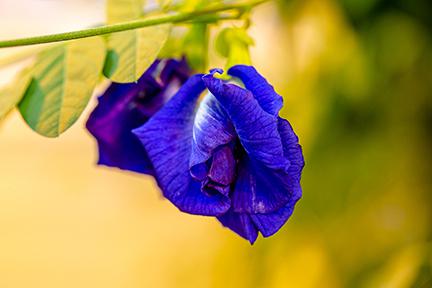FDA Approves Sensient Butterfly Pea Flower Extract
2021-09-07 00:00:00
The wait is finally over for a heat stable natural blue food color. The U.S. FDA has approved Sensient Technologies petition to add Butterfly Pea Flower Extract to the list of approved color additives.
Sensient Technologies Corporation announced today that the U.S. Food and Drug Administration (FDA) has approved a petition filed by Sensient’s Color Group to add butterfly pea flower extract to the list of approved color additives in the United States. The addition of butterfly pea flower extract is a major milestone for the food industry since it closes an important gap in the natural color palette. The novel blue color is exceptionally heat stable and enables food and beverage brands to achieve a range of shades including bright blues, intense purples, and natural greens.
The FDA approval covers a wide range of product categories including sport drinks, carbonated soft drinks, fruit drinks, fruit and vegetable juices, alcoholic beverages, dairy drinks, teas, nutritional beverages, gums, candy, coated nuts, ice creams, and yogurt. The FDA endorsement of butterfly pea flower extract as a color additive in the code of food regulations will enhance the ability of leading brands and retailers to innovate using natural colors.
“Closing the performance gap between FD&C colors and those from natural sources has long been a strategic priority for Sensient. The work on butterfly pea flower extract began more than a decade ago, and it is very gratifying to see the culmination of those efforts,” stated Paul Manning, Chairman, President, and Chief Executive Officer of Sensient Technologies Corporation.
Butterfly pea flower extract is the industry’s first plant-derived natural blue source approved by the FDA. The color additive fills an important gap in the natural color spectrum because of its exceptional heat and light stability. The water-soluble color delivers a bright denim shade in products at a pH above 3.8. In low pH products such as sport drinks, butterfly pea extract provides a unique deep purple shade.

Butterfly pea flower, also known as blue-pea, is native to equatorial Asia and found commonly throughout Southeast Asia. The petals have been used to make caffeine-free herbal tea for centuries. Artisan chefs often use butterfly pea flower to add vibrancy to their dishes. The color additive, by comparison, is considerably more complex to produce. The FDA approval requires ultrafiltration and concentration of butterfly pea flower extract to meet the requirements for use as a color additive.
“While butterfly pea flower is relatively ubiquitous in parts of Southeast Asia, we discovered that the petals commonly grown for other uses were not ideally suited for the manufacture of standardized natural colors. Through our ‘seed to shelf’ agronomy program, we invested to develop higher pigment petals in order to produce a highly stable, safe, and clean blue for modern food and beverage manufacturers,” explained Mike Geraghty, President of Sensient Colors LLC.
Read the full press release at the link below.





